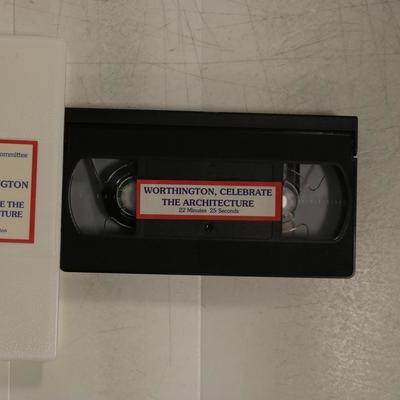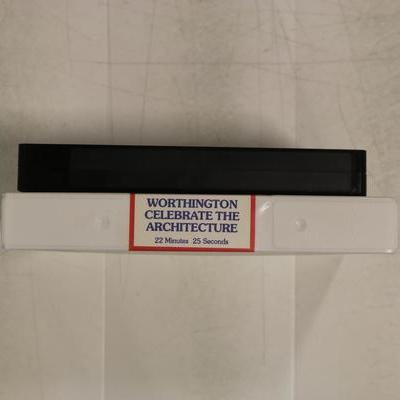Downloads
Full video (mp4: 149.29 MB)
Learn more about copyright and access restrictions for use of materials from Worthington Memory.
Worthington: Celebrate the Architecture is a videorecording. It is 22 minutes and 14 seconds long.
It was created in 1997.
Worthington Historical Society, City of Worthington and Worthington Schools are the Sponsors. ABOT Productions is the Videographer. Jonathan Kent is the Host. Jane Ellen Trucksis (née Neff), 1917-2005, Charles A. Nitschke, Jim Masters, Susan Hanson, Adam Bonner, Omar Tarazi and Diahannah Ream are the Writer of accompanying materials. Jim Masters is the Musical director.
This film explores the architectural influence on numerous historic buildings in Worthington. It begins with a brief look at the establishment of Worthington by settlers from Connecticut. Many of the early buildings were log cabins. After the village became more established, structures became more permanent and elaborate.
Several styles of architecture are presented, along with the time period they were popular and the buildings in Worthington that represent those styles.
The Federal style was popular from 1750-1835 and named after the founding of the United States. The first permanent buildings in Worthington were of this style. The architecture of the Orange Johnson house is an example of this style. Aurora Buttles was a builder of Federal houses in Worthington
The Greek Revival style was in vogue from 1835-1860, reflecting the popularity of Greek ideals with the founding fathers. The Old Rectory shows the influence of classical Greek structure.
The Gothic Revival style, from 1835-1870, shows the pioneer era coming to an end. Houses reflected the romantic details of European structures. St. John’s Church, constructed between 1827 and 1831, was ahead of its time as an example of this style.
The Italianate style, dating from 1850-1880, was inspired by the Tuscan villas of Italy, and is represented by the Township Hall.
The French Second Empire, from 1855-1885, is represented by the Topping house, the only house in Worthington of this style.
The film looks at numerous other examples of architectural styles that are exemplified by private homes in Worthington, including Queen Anne (1880-1905), American Farm House (1865-1900), Craftsman (1900-1925), American foursquare (1900-1930), Cottage (1900-1920), Homestead (1890-1915), Bungalow (1900-1925), Tudor Revival (1910-1940), English Revival (1915-1925), Colonial Revival (1926-present), Ranch (1940-1970), Split Level (1945-1970), Wrightian (1935-present), Contemporary (1950-present).
The film concludes with a performance of the song “Let’s Take a Walk Around Worthington,” composed by Jim Masters, with lyrics and performance by Colonial Hills Elementary School fourth graders.
It covers the topics Old Rectory, architecture, buildings, historic sites, homes, church buildings, Sharon Township Hall and Orange Johnson House.
It features the person James R. Topping, 1842-1922.
It features the organization St. John's Episcopal Church.
It covers the city Worthington.
You can find the original at Old Worthington Library.
This file was reformatted digital in the format video/mpeg.
The Worthington Memory identification code is wpl0299.
This metadata record was human prepared by Worthington Libraries on June 27, 2019. It was last updated July 29, 2019.


